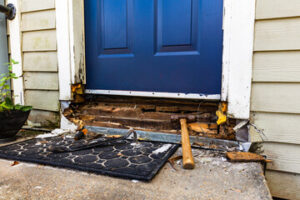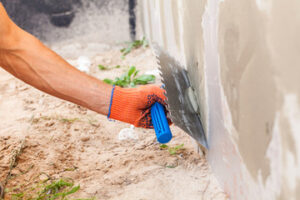Home » Concrete Contractors
Category Archives: Concrete Contractors
The Importance of Foundation Repair
Foundation cracks may seem harmless at first but they are often a sign that the house is shifting. This movement can cause doors and windows to jam or leave gaps at the top or bottom.

Pros Foundation Repair Greensboro NC has the expertise to identify problems and choose the right method for repairing them. They will also use the best materials and tools to ensure long-lasting results.
The foundation of your home supports all of the structure above it, keeps it stable, prevents settling and shifting, and protects it from soil pressure. It also distributes weight evenly, preventing the stress on certain parts of your home. When it becomes damaged, your home may not function correctly or even collapse. It’s important to have the damage repaired quickly and by a professional.
Foundation problems are complex issues that require expert knowledge to fix properly and permanently. A strong and stable foundation increases your resale value, makes your home more energy efficient, and helps keep pests and moisture out. But it’s a big investment that can cost tens of thousands of dollars to complete.
Many homeowners attempt DIY foundation repair projects, but it is generally not recommended unless you are experienced with such work. A professional contractor has the knowledge, tools, and solutions to complete effective repairs that are guaranteed to last. They can also identify other potential problems and recommend additional repairs, such as waterproofing or landscaping changes to prevent water from pooling around your foundation.
Before beginning any repair, a foundation repair contractor will clear away all plants, dirt, and debris from the area around your house. This will give them unencumbered access to the work areas and ensure they can finish the job faster. Depending on the type of repair, your foundation professionals will dig holes and/or excavate the ground beneath your home to determine the extent of the problem. They will then use the appropriate method to repair the damage.
Some methods of foundation repair include helical tiebacks, slab jacking, and pressed pile. These methods work by placing metal anchors into the ground under your home, which then use a hydraulic system to lift your home’s foundation back to its original position. This will restore the functionality of your home and prevent further damage. Other methods involve pouring concrete underneath your foundation, which raises the sunken area of your home and fills in any gaps. After repairing the foundation, your contractor will test the plumbing to make sure it’s functioning correctly. They will also regrade your yard so that the ground slopes away from your foundation, preventing water damage and hydrostatic pressure.
Repair Methods
When it comes to foundation repair, there are many different methods that contractors can use. The choice depends on the severity of the damage, the type of foundation, and soil conditions. The right method will ensure stability and minimize disruption. It will also safeguard your home’s future. For example, soil stabilization methods can prevent future damage to your home by preventing it from sinking into the ground.
Concrete slab repair is one of the most common methods for repairing a foundation. It involves repairing cracks and shifting in the foundation slab and creating a stable base for your home. This type of repair can take longer than other options and may require more excavation. However, it’s highly durable and effective.
Poured concrete piers are another option. These piers are installed by digging tunnels underneath the foundation and filling them with liquid concrete. Once they have cured, they are attached to the house. This is a relatively expensive option, but it is long-lasting and offers great support in most soil conditions.
Steel push piers are increasingly popular because they require less drilling and disturbance than concrete piers. They are also more effective than other types of piers. They can be used in a variety of soil conditions and are designed to lift your house back into place. They are also more economical than concrete piers, and they can be installed in a shorter period of time.
Other repair methods include carbon fiber bracing, wall plate anchors, and helical piers. These are less invasive than other options and can be used to correct structural problems such as stair-step cracks in brick walls. They can also be used to address sagging floors and doors that are sticking.
While some of these methods are more extensive than others, all of them offer reliable, lasting support for your home’s foundation. Regardless of which type of repair you choose, it’s important to recognize symptoms of foundation problems as soon as possible and seek professional help. Ignoring these signs can lead to more serious and costly issues down the line.
Hiring a Contractor
Your foundation is one of the most important parts of your house. If it’s damaged, it can cause a lot of problems for you and your family. Luckily, there are many contractors who specialize in foundation repair and can help you restore it to its former glory. However, it is important to choose the right contractor for the job. It is best to take your time in making your decision, and ask plenty of questions when interviewing potential contractors.
You should also pay close attention to the contractor’s references and past work. Ask about the quality of the work and if they finished the project on time. Also, check out any online reviews of the company to see what others have to say about their experience working with them.
A good foundation contractor will have years of experience and a proven track record of success. They will use advanced techniques and tools that ensure your home is safe and sound for the long-term. A professional will also be able to diagnose and identify the root causes of your foundation problems. For instance, what might seem like a crack may actually be the result of an uneven settlement or soil erosion.
When choosing a contractor, be sure to get detailed quotes from several different companies. Compare their costs, the methods they will use to fix your foundation, and any warranties they offer. You should also check that the contractor is licensed and insured, and has liability insurance in case of any accidents or damage to your property.
A reputable contractor should have no problem providing references from previous clients. You should also pay a visit to the job site to see how the contractor works and whether you are satisfied with their work. It is also a good idea to get a detailed estimate and timeline for the repair work. This will help you plan ahead and avoid any surprises down the road. Additionally, you should remove any plants, rocks, debris, or furniture near the work area to allow easy access for the contractor.
Damage Assessment
Before starting on foundation repair, it’s important to understand the damage and the extent of the problem. This will allow you to plan accordingly and minimize disruption. For example, you can cover furniture with plastic tarps and move it away from the area where work is being done. It’s also a good idea to keep children and pets out of the area as well. You’ll want to make sure that they don’t inhale the dust and debris.
The first step in determining the extent of your foundation’s damage is to assess water damage. This will involve looking for cracks in the walls, dampness and mold growth. You should also check for efflorescence, a white powdery substance that indicates water seepage. If you notice any of these signs, it’s a good idea to call professionals as soon as possible.
A professional will also conduct an exterior assessment of your foundation. They will look at the lay of the land and how your home sits on it, and observe drainage problems. They will also check the gutters and downspouts to ensure they are properly directing water away from the house. They may even take a sample of the soil to see how it is performing.
Once the experts have analyzed the foundation’s condition, they will begin the repairs. This phase can last a few days or weeks, depending on the severity of the issues. During this time, you’ll need to be patient and understanding of the workers. In addition, you should prepare for noise and dust. You can cover your furniture with plastic tarps and use air filters to limit the amount of dust in your home.
After the repairs are complete, you’ll need to wait a few months before doing any home renovations. This will give the foundation time to adjust to its new position. Some minor cracking is expected, but it should be relatively easy to repair with caulk or putty.
Many different techniques are used for foundation repair, and the length of the process will depend on several factors. One common method is concrete piering, which involves driving steel or concrete piers into the ground to support and stabilize the foundation. Another option is slab jacking, or mudjacking, which involves pumping a mixture of cement, sand and high-density polyurethane foam beneath a sunken concrete foundation to raise it back up to its original position.
